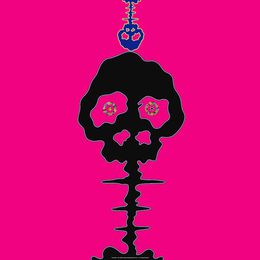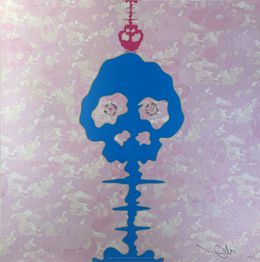
Takashi Murakami: Skulls
Takashi Murakami is one of the most famous contemporary artists of this century. The creator of "Superflat", a movement inspired by consumerism and ancient Japanese two-dimensional art, he combines elements of kitsch and pop art within his artworks. His art sells for impressive amounts of money, with his recurrent motifs and characters becoming as recognizable as they are sought after. His most recognizable motifs are without doubt his smiling flowers, or characters like Mr Dob. However, Murakami also has a passion for skulls, a motif with symbolism that resonates in Japan as well as in the West. He had used it intermittently for a long time, before it became an important part of his work around 2014.
Just three years after the Fukushima disaster, the artist presented his exhibition In the Land of the Dead, Stepping on the Tail of a Rainbow at Gagosian in New York. The artist was inspired by Buddhist themes, such as death and enlightenment, and by Japanese art history. He admits that he was also influenced by the work of Damien Hirst, who is known for his monumental works and skulls. In I Hate Death for example, Murakami makes extensive use of his small skull motifs, which together form a densely colored background, much like the way the artist uses his flower motif. Although attention was only drawn to his use of the skull after this exhibition, it has been a motif in the artist's work for much longer. Artsper invites you to discover its selection of Murakami's works which feature his famous skull motif.
Save your search and find it in your favorites
Save your search to find it quickly
Saved search
Your search is accessible from the favorites tab > My favorite searches
Unsaved search
A problem occurred












